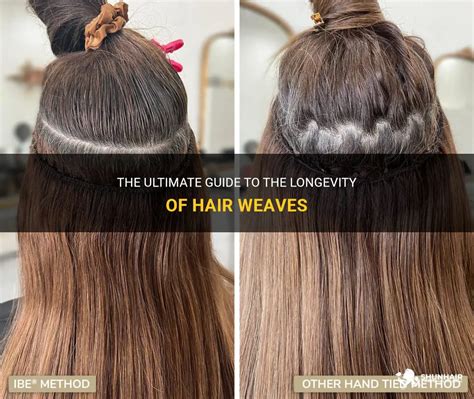Weave Wonders: A Global Phenomenon
With over 60% of women worldwide relying on hair extensions for volume, length, and style, the hair weaving industry has skyrocketed, reaching a staggering $12 billion valuation. This surge reflects the versatility and self-expression that weaves offer.

Types of Weaves: A Maze of Options
From clip-ins to bonded extensions, the types of weaves are endless. Here’s a breakdown to help you navigate the choices:
- Clip-ins: Temporary extensions that clip into your natural hair, providing quick and easy enhancements.
- Bonded extensions: Permanent extensions that are glued or welded to your own hair, offering a longer-lasting solution.
- Sew-in extensions: A versatile option where hair is sewn or braided onto a track that is then attached to your scalp.
Hair Materials: The Key to Quality
The durability, texture, and appearance of your weave depend on the hair material used. Here are the options:
- Human hair: Most expensive but natural-looking and can be treated like your own hair.
- Synthetic hair: Affordable but less natural-looking and can be prone to damage.
- Blend: A mix of human and synthetic hair, offering a balance between price and quality.
Common Mistakes to Avoid: Pitfalls to Watch Out For
- Over-Processing: Avoid chemical treatments on your weave, as this can damage the hair and reduce its shine.
- Improper Installation: Seek professional installation to ensure even distribution and avoid scalp irritation.
- Insufficient Maintenance: Follow care instructions to prevent tangling, matting, and premature shedding.
- Wrong Material Choice: Consider your lifestyle, budget, and hair type when selecting hair material to avoid disappointment.
How to Weave: A Step-by-Step Approach
- Prepare your hair: Braid or cornrow your natural hair to create a secure base.
- Choose the right extensions: Determine the length, texture, and color to complement your own hair.
- Attach the extensions: Use clips, glue, or braids to secure the extensions to your base.
- Blend: Cut and style the extensions to create a seamless transition between your natural hair and the weave.
- Maintain: Brush, wash, and condition your weave regularly to keep it looking fresh and vibrant.
FAQs: Unraveling the Mysteries
- How long do weaves last? With proper care, weaves can last 3-6 months, depending on the type and installation method used.
- Can weaves damage my hair? If installed correctly and maintained properly, weaves do not damage your natural hair.
- How much do weaves cost? The cost varies depending on factors such as hair material, length, and installation method, ranging from $200 to over $2,000.
- Are weaves suitable for all hair types? Yes, there are weaves designed for all hair types, from fine to thick and curly to straight.
Beyond Beauty: The Transformative Power of Weaves
Weaves have transcended their cosmetic purpose, becoming a tool for self-expression, empowerment, and cultural connection.
1. Cultural Identity: Weaves have played a significant role in African American culture, symbolizing strength, resistance, and beauty.
2. Confidence Boost: Weaves can boost self-confidence by providing volume, length, and style that may not be naturally achievable.
3. Versatility: Weaves allow for endless style possibilities, from sleek and professional to bold and daring.
4. Hair Health: Weaves can protect natural hair from environmental damage and breakage, especially for women with fragile hair.
The Future of Weaves: Innovation and Evolution
The hair weaving industry is constantly innovating, developing new technologies and materials to enhance the experience.
1. Nano-Weaving: A technique using smaller hair strands and microbeads for a more natural and seamless blend.
2. Virtual Consultations: Online platforms that allow clients to consult with stylists and try on virtual hair swatches.
3. Bio-Hair: Eco-friendly and biodegradable hair extensions made from plant-based materials or recycled human hair.
Conclusion: Embracing Diversity and Individuality
Weaves are a versatile and transformative hair solution that empowers women to express their unique style, boost their confidence, and connect with their cultural heritage. As the industry continues to evolve, we can expect even more innovative and personalized weaves that cater to the diverse needs of women worldwide.
